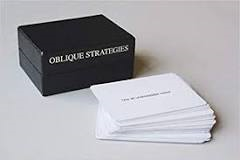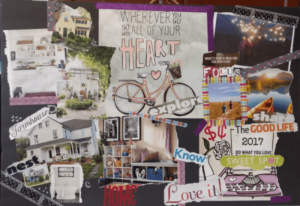

One size does not fit all when it comes to motivation, so we will often find that we have to try new techniques, new mindsets, and new approaches in our search for that perfect ensemble.
All the same, it’s good to have a few tricks up our sleeve, whether trying to motivate ourselves or someone on our team, classroom, or at home.
Hard work beats talent when talent doesn’t work hard.
This article is a form of motivation toolbox that contains several motivational activities and worksheets as well as suggestions (new and old) for how to intervene in our motivational states.
Before you continue, we thought you might like to download our three Goal Achievement Exercises for free. These detailed, science-based exercises will help you or your clients create actionable goals and master techniques to create lasting behavior change.
In our search for the just-right recipe for motivation, we need to understand first what motivates us. We begin with awareness building tools in the form of questionnaires.
The first worksheet will help us assess the satisfaction of basic psychological needs. Then we will move to the exploration of our mechanisms that support or thwart motivation. We will explore our self-esteem and take an inventory of our curiosity before we dive into what else might get in the way and cause us to procrastinate.
Once equipped with a good map of our current motivational needs, we move on to interventions that help alter our emotional states toward the positive and bring on a sense of wellbeing, which can be used to increase our motivation toward goal pursuit.
According to the self-determination theory, the needs for competence, autonomy, and relatedness must be continually satisfied for people to develop and function in healthy and optimal ways (Deci & Ryan, 2000).
Please read each of the following items carefully, thinking about how it relates to your life, and then indicate how true it is for you. Use the following 7-point scale to respond, with the values 2 or 3 and 5 or 6 graded responses.
| Statements | Response |
|---|---|
| 1. I feel like I am free to decide for myself how to live my life. | – |
| 2. I really like the people I interact with. | – |
| 3. Often, I do not feel very competent. | – |
| 4. I feel pressured in my life. | – |
| 5. People I know tell me I am good at what I do. | – |
| 6. I get along with people I come into contact with. | – |
| 7. I pretty much keep to myself and don’t have a lot of social contacts. | – |
| 8. I generally feel free to express my ideas and opinions. | – |
| 9. I consider the people I regularly interact with to be my friends. | – |
| 10. I have been able to learn interesting new skills recently. | – |
| 11. In my daily life, I frequently have to do what I am told. | – |
| 12. People in my life care about me. | – |
| 13. Most days I feel a sense of accomplishment from what I do. | – |
| 14. People I interact with on a daily basis tend to take my feelings into consideration. | – |
| 15. In my life I do not get much of a chance to show how capable I am. | – |
| 16. There are not many people that I am close to. | – |
| 17. I feel like I can pretty much be myself in my daily situations. | – |
| 18. The people I interact with regularly do not seem to like me much. | – |
| 19. I often do not feel very capable. | – |
| 20. There is not much opportunity for me to decide for myself how to do things in my daily life. | – |
| 21. People are generally pretty friendly towards me. | – |
Scoring information: Form three subscale scores, one for the degree to which the person experiences satisfaction of each of the three needs. To do that, you must first reverse score all items that are worded in a negative way shown below with (R) following the items numbers.
To reverse score an item, simply subtract the item response from 8. Thus, for example, a two would be converted to a 6. Once you have reverse scored the items, average the items on the relevant subscale:
Autonomy: 1, 4(R), 8, 11(R), 14, 17, 20(R)
Competence: 3(R), 5, 10, 13, 15(R), 19(R)
Relatedness: 2, 6, 7(R), 9, 12, 16(R), 18(R), 21
The scale is a ten-item Likert scale with items answered on a four-point scale – from strongly agree to strongly disagree.
Instructions: Below is a list of statements dealing with your general feelings about yourself. If you strongly agree, circle SA. If you agree with the statement, circle A. If you disagree, circle D. If you strongly disagree, circle SD.
| Statements | Strongly Agree | Agree | Disagree | Strongly Disagree |
|---|---|---|---|---|
| On the whole, I am satisfied with myself. | SA | A | D | SD |
| *At times, I think I am no good at all. | SA | A | D | SD |
| I am able to do things as well as most other people. | SA | A | D | SD |
| I feel that I have a number of good qualities. | SA | A | D | SD |
| * I certainly feel useless at times. | SA | A | D | SD |
| * I feel I do not have much to be proud of. | SA | A | D | SD |
| I feel that I’m a person of worth, at least on an equal plane with others. | SA | A | D | SD |
| * I wish I could have more respect for myself. | SA | A | D | SD |
| * All in all, I am inclined to feel that I am a failure. | SA | A | D | SD |
| I take a positive attitude toward myself. | SA | A | D | SD |
Scoring: SA=3, A=2, D=1, SD=0. Items with an asterisk are reverse scored, that is, SA=0, A=1, D=2, SD=3. Sum the scores for the ten items. The higher the score, the higher the self-esteem. We also discuss the Rosenberg Self-esteem Scale with questionnaires in detail in our blog.
Curiosity has been positively linked to intrinsic motivation and is considered by some a vital psychological mechanism for achieving more of it. Trait curiosity and exploration inventory designed by Kashdan to measure our inclination to inherently rewarding pursuits. Curiosity has been linked to many health and social benefits (2009).
Rate the following statements on how they describe how you generally feel. Score each response as follows:
| Statements | Response |
|---|---|
| 1. I actively seek as much information as I can in a new situation. | – |
| 2. I am the type of person who really enjoys the uncertainty of everyday life. | – |
| 3. I am at my best when doing something challenging and complex. | – |
| 4. Everywhere I go I am looking for new things and experiences. | – |
| 5. I view challenging situations as an opportunity to grow and learn. | – |
| 6. I like to do things that are a little bit frightening | – |
| 7. I am always looking for experiences that challenge how I think about myself and the world. | – |
| 8. I prefer jobs that are excitingly unpredictable. | – |
| 9. I frequently seek out opportunities to challenge myself and grow as a person. | – |
| 10. I am the kind of person who embraces unfamiliar people, events, and places. | – |
Students may use the following statements to describe themselves. For each statement, decide whether the statement is uncharacteristic or characteristic of you using the following 5-point scale.
Note that the three on the scale is Neutral – the statement is neither characteristic nor uncharacteristic of you. To the right of each statement, write the number on the 5-point scale that best describes you.
| Statements | Response |
|---|---|
| 1. I often find myself performing tasks that I had intended to do days before. | – |
| 2. I do not do assignments until just before they are to be handed in. | – |
| 3. When I am finished with a library book, I return it right away regardless of the date it is due. | – |
| 4. When it is time to get up in the morning, I most often get right out of bed. | – |
| 5. A letter may sit for days after I write it before mailing it. | – |
| 6. I generally return phone calls promptly. | – |
| 7. Even with jobs that require little else except sitting down and doing them, I find they seldom get done for days. | – |
| 8. I usually make decisions as soon as possible. | – |
| 9. I generally delay before starting on work I have to do. | – |
| 10. I usually have to rush to complete a task on time. | – |
| 11. When preparing to go out, I am seldom caught having to do something at the last minute. | – |
| 12. In preparing for some deadline, I often waste time by doing other things. | – |
| 13. I prefer to leave early for an appointment. | – |
| 14. I usually start an assignment shortly after it is assigned. | – |
| 15. I often have a task finished sooner than necessary. | – |
| 16. I always seem to end up shopping for birthday or Christmas gifts at the last minute. | – |
| 17. I usually buy even an essential item at the last minute. | – |
| 18. I usually accomplish all the things I plan to do in a day. | – |
| 19. I am continually saying I will do it tomorrow | – |
| 20. I usually take care of all the tasks I have to do before I settle down and relax for the evening. | – |
Note: Reversed-keyed items: 3,4,6,8,11,13,14,15,18,20
Changes in emotion and perceptions of wellbeing can be used as feedback in the effort to motivate others in productive ways. Several subjective experiences of wellbeing can be achieved through practicing gratitude, cultivation of hope through visualization, or through learning to exercise one’s strengths. These, in turn, can be used to support increased motivation and produce a gradual change in behavior.
Here are some examples of worksheets used by Robert Biswas-Diener as tools for increasing positive emotions and cognitions from his manual for coaching positive psychology. These are prime examples of intervention that alter emotional states toward the positive or re-frame our way of thinking toward the more optimistic end of the spectrum.
Happiness is liquid, in the same way, that monetary instruments such as stocks are liquid. Humans are built with emotional systems that include the capacity for happiness. It is a type of emotional currency that can be spent, like money, on the outcomes in life we truly value, such as our health, our relationships, and success at work.
One way to appreciate the existing wealth we all possess is to notice and magnify moments when we either receive from or give kindness to others.
Reflect on the following questions:
Reflect on the image of your ideal self by answering the following questions. This can be done in the form of powerful open-ended questioning during a coaching session or assigned as a writing exercise.
It may be the near future or several years from now. Imagine this is a future in which you have gotten many of the things you want from life and accomplished many of the things to which you aspire.
Take a couple of minutes to picture what you are like and what your life is like. Imagine where you would be living, where you would be working. Imagine what your commute is like, your health is like, your friendships are like. Imagine the skills you have and the opportunities you have for growth.
Picture the types of decisions you have made and the goals you have achieved.
This can be done in the form of powerful open-ended questioning during a coaching session or assigned as a writing exercise.
Now that the client has a vision of a desired future, we can help him or her move toward goal setting.
Setting SMART+R Goals offers a different take on SMART goals that assigns more importance to indicators of making progress and measuring progress against specific targets.
This flow also incorporates room for scheduled rewards, to encourage positive reinforcement when a target is reached.
Another way to track progress would be to use technology. Feedback tracking technologies have been designed to help address progress feedback.
The pursuit of quantifiable objectives often guides our lives. When something gets in the way of sustaining the motivation necessary for achieving those goals, we can use self-tracking technologies to motivate ourselves and others.
Goal progress feedback with valences and visualization features can influences commitment and persistence across a broad range of domains, including physical tasks and purchasing behaviors, according to recent data from social and consumer psychology research.
Here is a quick list of what’s out there:
Implementation Intentions, also known as ‘If, then‘ plans can be very helpful in planning for all the eventualities when something gets in the way of achieving our goals. Normally we would brainstorm ahead of time to have a back-up plan for when known detractors get in the way of getting things done.
We suggest that occasionally, we introduce a reward into this plan of action to even further motivate persistence on goal. This Building New Habits exercise helps you do this by working through the three steps of The Habit Loop: cue, behavior, and reward.

Goal setting is often best supported through coaching.
One model of goal setting conversation is the Auerbach GOOD coaching model (2015). It can be used for structuring coaching sessions in a way that progresses from goal setting and exploring options to action planning and accountability.
Goals – define the most important goals a client wants to work toward
Options – explore option is available to help them move forward
Obstacles – name obstacles that might get in the way of progress
Do – specify what is the client going to do specifically and by when
To expand on these steps of the GOOD model, here are questions you can ask at each stage and all while practicing empathy, active listening, and providing support.
Designed to distinguish four distinct types of motivational approaches to work: procrastinators, incubators, planners, and triflers (Biswas-Diener, 2010).
4= perfectly describes me
3= describes me somewhat
2= does not describe me
1= does not describe me at all
A= I always get my work completed on time
B= The quality of my work is superior
C= It takes a looming deadline to motivate me
D= I do my best work under pressure
E= I like to get started on the project right away
Use the following description to score the work-style questionnaire by looking for the following constellations of high scores:
Planners: are self-motivated, strategize their work, and tend to start right away even on the long-term project. Planners generally score high on items A, B, and E.
Incubators: thrive on deadlines, put off work till the last minute but always complete work on time, and produce high quality. Incubators generally score high on items A, B, C, and D.
Triflers: start work early but get distracted and lose interest easily. Triflers generally score high on item E and low on items A and B.
Procrastinators: put off work till the last minute and often hand in mediocre work. Procrastinators generally score high on items C and D and low on items A and B.

The Positive Psychology Toolkit© is a groundbreaking practitioner resource containing over 500 science-based exercises, activities, interventions, questionnaires, and assessments created by experts using the latest positive psychology research.
Updated monthly. 100% Science-based.
“The best positive psychology resource out there!”
— Emiliya Zhivotovskaya, Flourishing Center CEO
Intrinsically motivating activities can be identified through the experience sampling method originally used by Csikszentmihalyi to identify the states of flow (1990). The below questionnaire can help clients understand how they allocate attention throughout the day and if they spend a lot of time investing their energy effectively.
This should be done over at least a week but preferably two. Ask the client to set their phone to prompt him or her during the day at random times to notice what they are doing and jot down the answers to the following questions:
A recent study where subjects were asked to deliberately not engage in intrinsically motivating activities showed a decrease in the sense of wellbeing in just two days (Pink, 2009).
Using strengths, according to Govinji and Linley leads to wellbeing and vitality and promotes self-efficacy and believing that you can accomplish your goals (2007). Here is a questionnaire their study was based on, followed by reflection questions about using strengths in a new way which often leads to better progress toward goals:
Here are questions that can be used for reflecting on leveraging strengths toward goal pursuit:
Although the methods themselves have not been scientifically tested, some of the techniques used by the neuro-linguistic programming (NLP) have shown to be effective in increasing positive emotional states and can be linked to well-known psychological phenomena.
NLP has been used to increase self-awareness and to help spot negative patterns, thoughts, and assumptions that may be worth replacing. We discuss two commonly used NLP methods below; first to alter emotional states toward the positive in the moment, and the second to combat thoughts that trigger anxiety by visualizing alternative responses.
Anchoring technique is based on the psychological concepts of operant conditioning, where a stimulus triggers specific responses that were conditioned through repetition. The goal of the practice is to learn to elicit positive emotional responses at will so one can use them as needed. Anchoring is intended to improve our ability to control emotions and allows us to take an active role in self-regulation.
How to use the anchoring technique:
The Swish Method attempts to identify mental and emotional triggers of negativity and replace them with a typical response.
In this technique, you don’t have to take any action but become aware of the alternatives available to you in terms of how you respond to negative thoughts and emotions.
Driven by the principle that seeing is believing, the Swish Method is a visualization technique based on the assumption that our mind often does not differentiate between real and visualized events, as they both activate the same parts of the brain.
How to put the Swish Method into action:

Last but not least, completely unscientific but fun and artistic way of getting unstuck and introducing a bit of unexpected creativity are thought-provoking statements that add an element of surprise.
Oblique Strategies (subtitled Over One Hundred Worthwhile Dilemmas) is a card-based method for promoting creativity designed by Brian Eno and Peter Schmidt, first published in 1975.
Here are examples of these statements:

Creating a motivation board that includes all your goals, aspirations, and dreams can also be an effective form of motivation.
Some call it a vision board, and it is basically a visual incentive that can help you find excitement and enthusiasm through pictures of what you want, making it harder to ignore than words. It should be placed somewhere where you can see it every day because out of sight is out of mind.
Other Visual aids such as drawing, video recordings, viewing images of others accomplishing what you want to accomplish are all powerful tools to make your subconscious mind aligned with your conscious desire.

These detailed, science-based exercises will help you or your clients create actionable goals and master techniques for lasting behavior change.